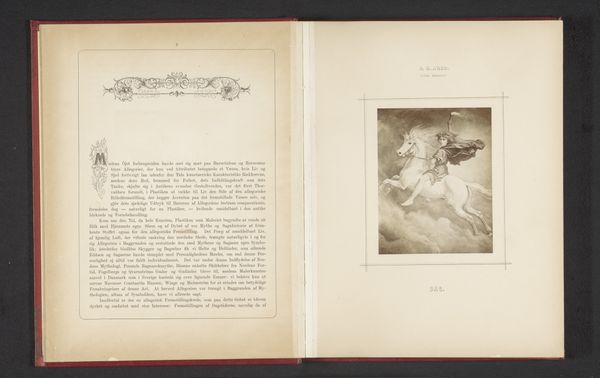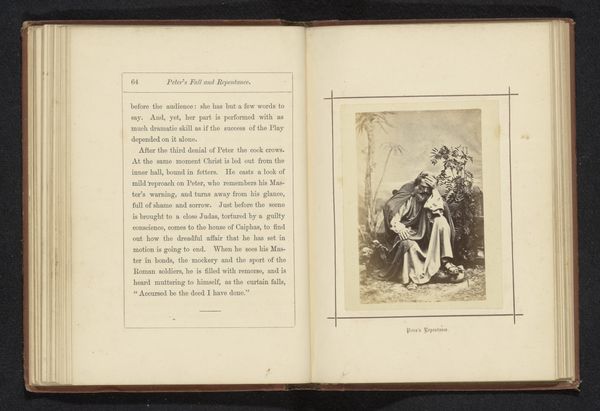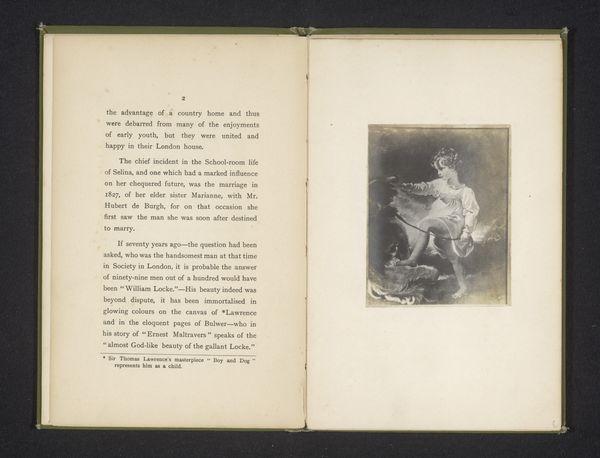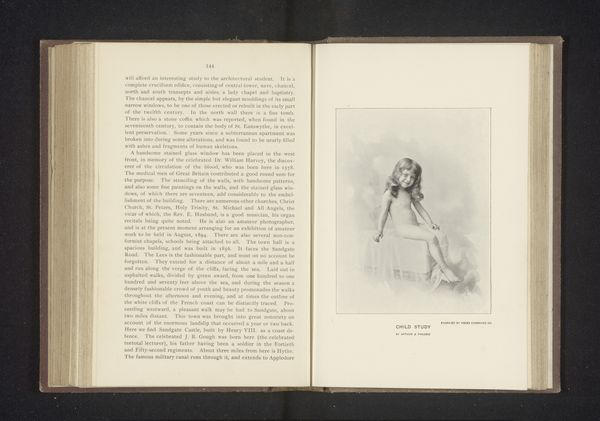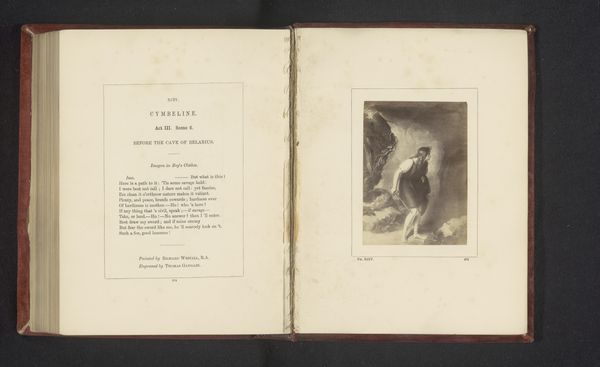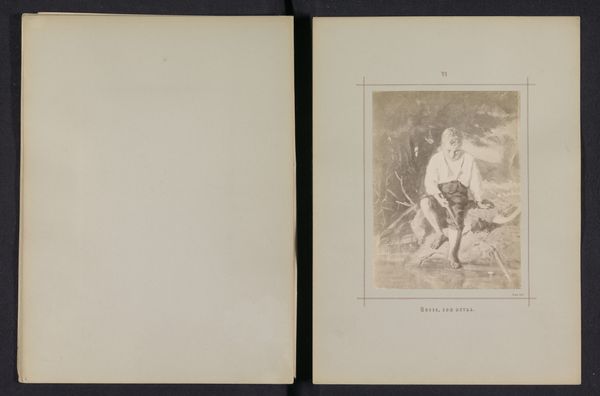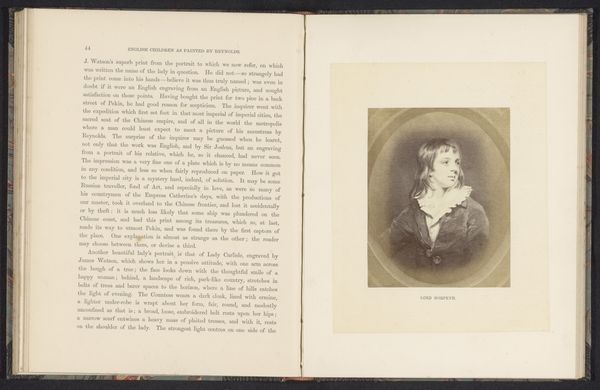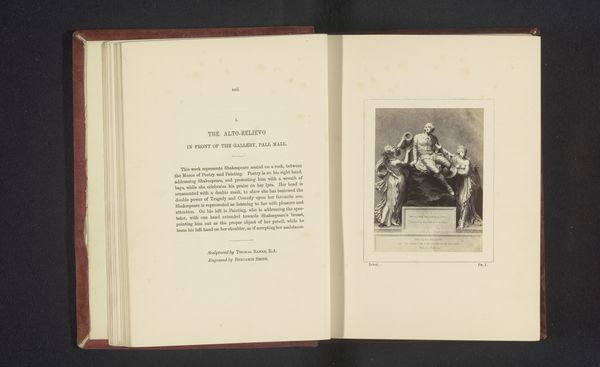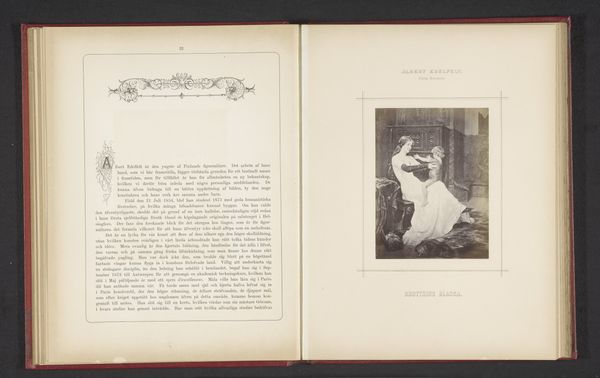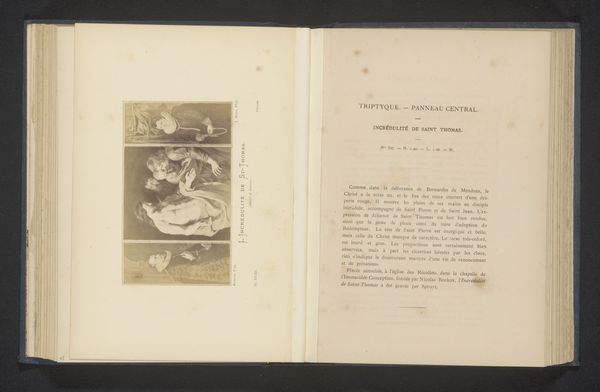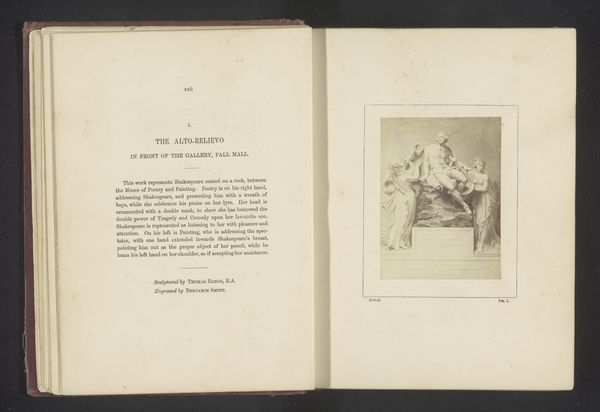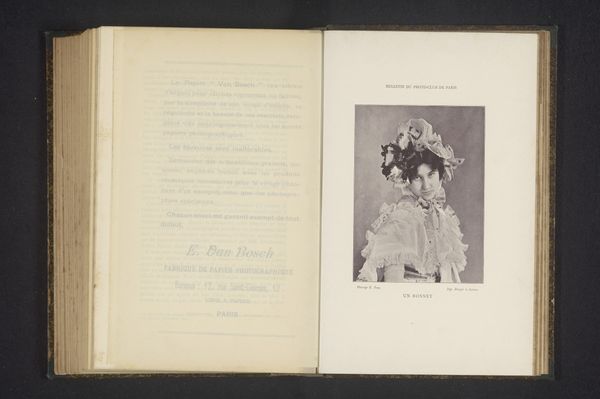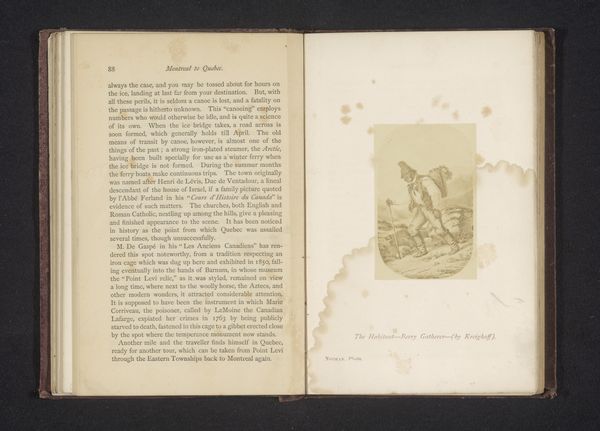
Fotoreproductie van een schilderij van Adam en Eva door Hans Olaf Heyerdahl before 1879
0:00
0:00
Dimensions: height 181 mm, width 126 mm
Copyright: Rijks Museum: Open Domain
Curator: Here we have a photographic reproduction of a painting called *Adam and Eve* by Hans Olaf Heyerdahl, created before 1879. It’s an interesting find nestled within the pages of what appears to be an old book. Editor: My first thought is that there’s a remarkable contrast between the clarity of the figures and the hazy, almost dreamlike background. There's a kind of pre-Raphaelite aesthetic at play. It almost looks like a staged theatrical tableau, filtered through a lens of Romantic sensibility. Curator: Precisely. Consider the conventions of academic art at the time. Historical paintings were not merely depictions but also carriers of cultural values. This work borrows heavily from art historical tradition by revisiting a familiar biblical narrative. But by photographing the artwork it also made that artwork more accessible through printed media and democratized access. Editor: You’re right. The very act of reproduction through photography challenges traditional notions of artistic labor and value. Heyerdahl’s painting would have originally been exhibited in perhaps a Salon, reinforcing the established hierarchies. But placing its photograph in a book renders it far more portable and able to circulate freely. Who consumed it? What type of printing processes are on display? It allows broader public access. It's intriguing how it exists somewhere between high art and the means of mass production. Curator: And isn’t that the crux of it? Photography at this point wasn't always considered high art in and of itself but here it becomes a medium to spread artistic styles and ideas—the Romanticism and academic training becomes infinitely more distributed. The politics of imagery in printed media were starting to become a means to educate or indoctrinate the general public, by providing affordable access to art and its corresponding aesthetic and socio-cultural themes. Editor: It makes you wonder about the photographer. Were they a collaborator? Or was this photograph made entirely separate from Heyerdahl himself, and therefore part of a whole different industry around circulating and selling existing artwork? Curator: Yes, the conditions of its making definitely influence the final work. Ultimately this *Adam and Eve* is a historical echo and speaks to the broader social and technological transformations underway at the time. Editor: I concur. This isn’t just about a biblical scene; it's a comment on the changing landscape of art production and the burgeoning role of reproduction in shaping artistic identity.
Comments
No comments
Be the first to comment and join the conversation on the ultimate creative platform.
